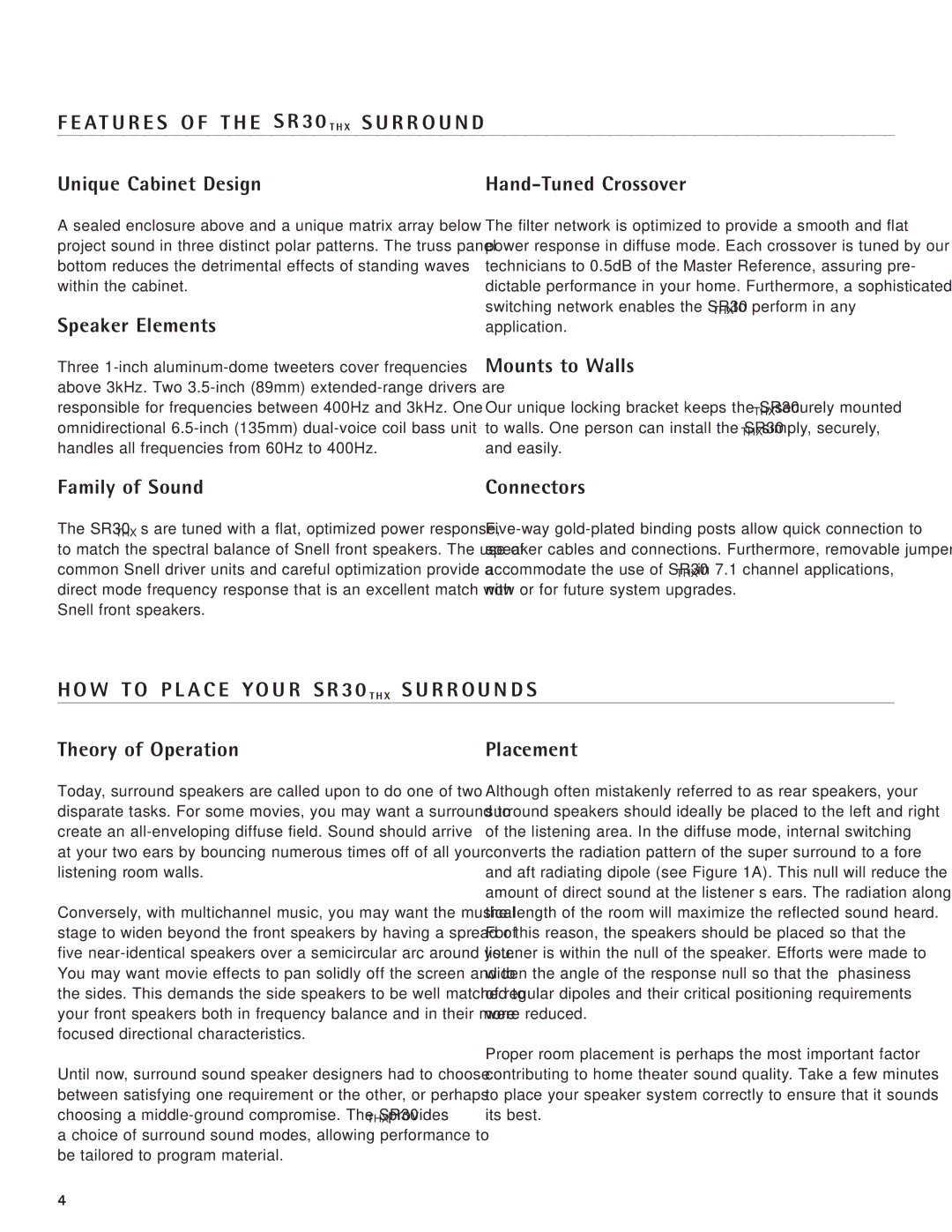SR30THX specifications
The Snell Acoustics SR30THX speakers are a testament to innovation in the world of audio engineering. Designed for the critical listener, the SR30THX model combines advanced technology with meticulous craftsmanship, resulting in a sound reproduction that meets the stringent demands of home theaters and high-fidelity applications alike.One of the standout features of the SR30THX is its incorporation of the THX certification, which ensures that the speaker meets set performance standards for home audio systems. This certification aligns with Snell’s commitment to providing an immersive listening experience that retains the integrity of the original recording. The SR30THX aims to deliver the cinematic experience right in the comfort of your home.
The speaker features a robust, dual 6.5-inch woofers designed to produce deep, rich bass response. Coupled with a 1-inch silk dome tweeter, the SR30THX offers an impressive frequency response that extends from low rumbling bass to sparkling highs, ensuring that every note and sound is portrayed with clarity and detail. This three-way design allows for better sound dispersion across various listening environments, making it ideal for large rooms or dedicated theater spaces.
Another notable characteristic of the SR30THX is its advanced crossover network. The high-quality components in the crossover ensure smooth transitions between drivers, resulting in well-blended sound that enhances the listening experience. This technology aids in minimizing phase issues and distortion, allowing for accurate sound staging—a crucial aspect for discerning audiophiles.
For aesthetics, the SR30THX features a sleek, modern design that complements any home decor. With its durable cabinetry and premium finishes, this speaker not only performs well but looks great in any setting. Additionally, the front grille can be removed, allowing users to showcase the attractive drivers.
In terms of connectivity, the Snell Acoustics SR30THX is versatile, accommodating various audio setups. With high-quality binding posts, it ensures secure connections with minimal signal loss. This versatility makes it compatible with a broad range of amplifiers and receivers.
In summary, the Snell Acoustics SR30THX speakers are engineered for those who appreciate audio excellence. With their THX certification, advanced technology, and elegant design, they provide a remarkable listening experience that captivates both casual listeners and serious audiophiles. Whether for music or movies, the SR30THX brings a new dimension to home audio, making it a worthy addition to any entertainment system.

